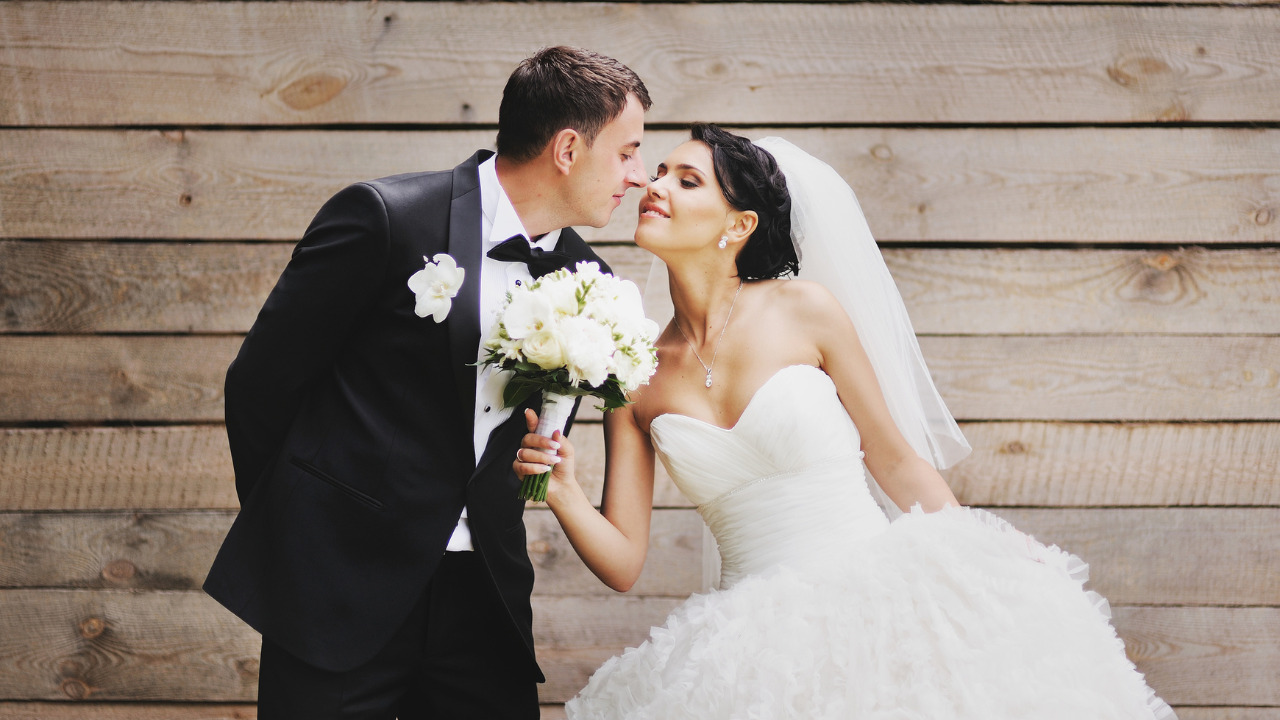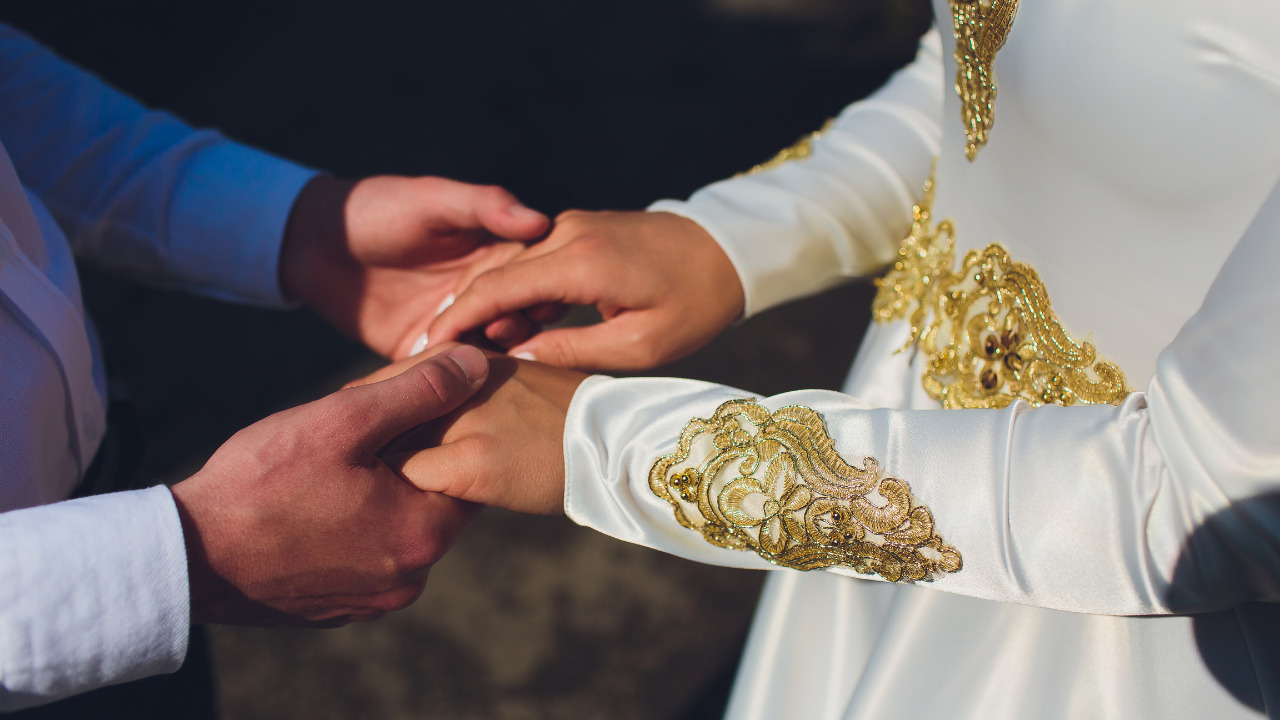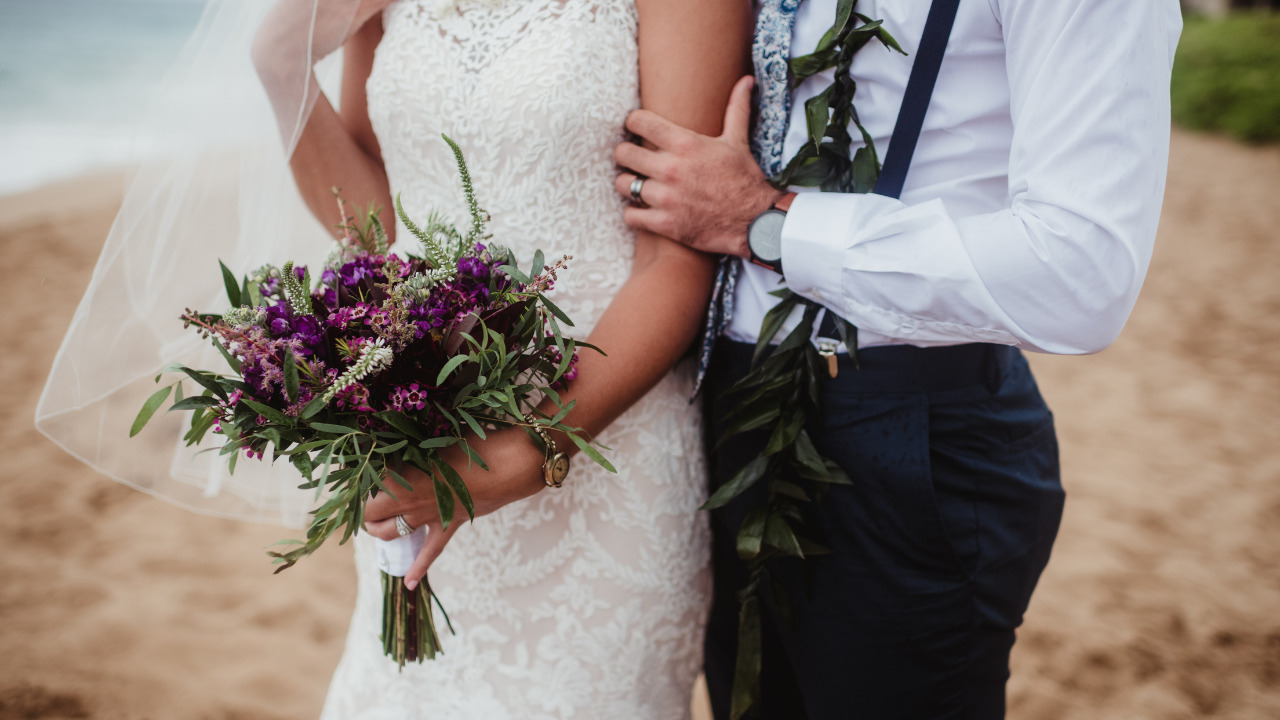If you’re getting married and haven’t made a wedding website yet, you should. And not just because everyone else is doing it, or because we say it’s what you’re supposed to do. It’s hands down the easiest way to share need-to-know info with your guests in one, convenient (and pretty) place. Not to mention it’s free, fun and insanely easy to make one through The Knot—but we digress.
Once you create a gorgeous website of your own, it’ll be the best reference point for your guests. With all the important wedding info a click away, they’ll no longer have to play “guess the wedding attire,” or keep texting you with random questions (like, “Can I bring my kids to the party?”). Think of your site as overflow from your invitations—thanks to space limitation and statutes of etiquette, there’s only so much you can put on a rectangle of cardstock. Read seven details to add to your wedding website that can’t go on your invitations, plus those to include on both (and neither).
For Your Wedding Website Only
1. Registry Information
Wedding invitations (and save-the-dates) are still no place for your registry information, since it’s not mandatory for guests to give you a gift. Leave all implied gift requests to your site so it doesn’t look like you’re expecting presents off the bat. With the The Knot All-In-One Registry, you can sync your registry to your website in no time. Your guests will have no trouble finding links to your registry retailers, newlywed or honeymoon fund and preferred philanthropies.
2. Adults-Only Announcements
Not including any kids on the guest list? That’s fine! Tons of couples host an adults-only wedding—but don’t come out and say so on your official invites. (A good tip: Address the outer envelope of each invitation to exactly who it’s meant for—for example, “Mr. and Mrs. Smith,” not The Smith Family). Your website is the place to announce you’re keeping the party a grown-up affair—or that, if you are inviting children, you’ll be hiring a babysitter or other accommodations and activities to keep them occupied.
3. Dress Code Details
It’s totally fine to print a brief mention of the attire in the lower right-hand corner of your invitation—for instance, “black tie,” “cocktail attire” or “casual attire” are all acceptable. However, there’s no need (and no room) to elaborate. If you want to get specific, use your website to give guests a little vocabulary lesson on what exactly you mean by “semi-cocktail appropriate” (whatever that is). This is also the spot to make suggestions, like that the ladies should stick to flats and wedges for your outdoor venue, or bring a layer to cover bare skin during the religious ceremony.
4. The Wedding Party
Who has the room (or the budget) to cram full bios of the wedding party on a paper invitation? The bridesmaids, groomsmen and other VIPs should get a mention on either, or both, of two places: your wedding website and the ceremony programs. With infinite space online, share fun facts about your crew, epic photos and how you’re related or how you met.
5. Transportation and Lodging
Keep these helpful and essential logistics online. Your guests will appreciate that you’ve blocked rooms at a specific hotel and included all the info they need to reserve a room. (Psst—we’ve made it a breeze for you with HotelPlanner.) If you’ve arranged transportation to and from the ceremony and reception, pop that info in too. While you’re at it, go the extra mile to include local car services, restaurant recs, nearby coffee shops, fun activities and other helpful tidbits to keep your guests clued in and happy during their stay.
6. Your Love Story
Don’t write the story of how you met, fell in love and got engaged on your invitation. It’s not that your guests don’t want to read it—it’s more that your website is the better platform for these sweet details. Plus, sharing your story digitally makes it easy to upload and show off your cutest couples photos from every relationship milestone (definitely sneak in your favorites from your engagement shoot).
7. Social Media Guidelines
Consider your website a one-stop shop for social guidelines. Some couples print their hashtag along with a link to their website on their save-the-dates—but you can save any social media preferences for your website if you like. Let your guests know if you’re using a hashtag, setting up a photo-sharing app like The Guest or even creating your own wedding Instagram account (hey, people do it!). On the other end of the spectrum, take advantage of your website to let your guests know you’re having an unplugged wedding.
Invitation- and Website-Approved Details
We’ll make it simple: Everything you include on your invitations should transfer over to your wedding website. Post your names (duh), wedding date, time and location on your website, as well as announcements and logistics surrounding additional events like welcome drinks or farewell brunch. Don’t forget to nudge your guests with an RSVP date and details too.
Things to Leave Off of Both
1. Exclusive Events
Avoid mentioning any exclusive events to which only close family members and your wedding party are invited. We’re talking about bachelor/bachelorette parties, engagement parties, the rehearsal dinner and so on. These parties should get their own separate invites (either paper or e-vite work), but shouldn’t go on your formal invitations or website—that’s when things get confusing and feelings get hurt.
2. Inappropriate Photos and Anecdotes
Don’t post or mail anything you wouldn’t want your great aunts and future in-laws to see (maybe exclude those potentially compromising photos from your freshman year in college). Remember, once something’s online, it’s hard to get rid of—just saying.



